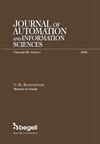运动员功能诊断自动化工作场所
Q3 Engineering
Journal of Automation and Information Sciences
Pub Date : 2021-07-01
DOI:10.34229/1028-0979-2021-4-13
引用次数: 0
摘要
现代体育训练中最重要的任务之一是在训练和竞技活动过程中控制运动员身体状态的能力。为此,使用系统注册和分析运动员在活动动态中的功能能力信息,可以在计划和纠正训练负荷时提供个性化的方法。这对于医学和教学检查尤其重要。开发提高身体表现的方法和手段,特别是在高性能运动的实践中,是现代运动医学、劳动生理学和体育学最重要的原则之一。在现代运动医学的实践中,当对运动员进行大规模检查时,基于A.Z.Kolchinskaya提出的关于身体氧气状态调节的概念的方法,可以给出气体稳态的一般特征,以诊断与体内呼吸气体运输障碍相关的主要综合征,评估每年运动训练周期的各个阶段以及运动后恢复期的身体功能状态。由于这项工作与接收到的信息的大量计算和后续处理有关,因此有必要使用现代信息支持的现代手段。因此,用于运动员功能诊断的自动化信息系统(AIS)允许多次加快对运动员检查期间获得的数据的处理,集中积累信息用于其预处理、存储和AIS的集体使用,配备了用于数据的图形和表格表示的方便服务,允许分析运动员在年度训练周期以及奥运会4年训练周期阶段的功能状态动态。本文章由计算机程序翻译,如有差异,请以英文原文为准。
AUTOMATED WORKPLACES FOR FUNCTIONAL DIAGNOSTICS OF ATHLETES
One of the most important tasks in modern sport's training for the sport of highest achievements is the ability to control the state of the athlete's body in the process of training and competitive activities. For this purpose, the use of systems registering and analyzing information about the functional capabilities of an athlete in the dynamics of his activity, allows you to provide an individual approach when planning and correcting training loads. This is especially important for medical and pedagogical examination. The development of methods and means for increasing physical performance and, in particular, in the practice of high-performance sports, is one of the most important principles of modern sports medicine, physiology of labor and sports. In the practice of modern sports medicine, when carrying out mass examinations of athletes, the approach based on the proposed A.Z. Kolchinskaya concept on the regulation of the body's oxygen regimes, which allows to give a general characteristic of gas homeostasis, to diagnose the main syndromes associated with disorders of the transport of respiratory gases in the body, to assess the functional state of the body at all stages of the annual cycle of sports training and during the post-exercise recovery period. Since this work is associated with a large number of calculations and subsequent processing of the information received, it is necessary to use modern means of modern information support. Thus, the automated information system (AIS) for the functional diagnostics of athletes allows many times to speed up the processing of data obtained during the examination of athletes, centrally accumulate information for its preprocessing, storage and collective use of the AIS, is equipped with convenient services for graphical and tabular presentation of data, allows analyzing the dynamics of functional the state of athletes in the annual cycle of their training, as well as at the stage of the 4-year training Olympic cycle.
求助全文
通过发布文献求助,成功后即可免费获取论文全文。
去求助
来源期刊

Journal of Automation and Information Sciences
AUTOMATION & CONTROL SYSTEMS-
自引率
0.00%
发文量
0
审稿时长
6-12 weeks
期刊介绍:
This journal contains translations of papers from the Russian-language bimonthly "Mezhdunarodnyi nauchno-tekhnicheskiy zhurnal "Problemy upravleniya i informatiki". Subjects covered include information sciences such as pattern recognition, forecasting, identification and evaluation of complex systems, information security, fault diagnosis and reliability. In addition, the journal also deals with such automation subjects as adaptive, stochastic and optimal control, control and identification under uncertainty, robotics, and applications of user-friendly computers in management of economic, industrial, biological, and medical systems. The Journal of Automation and Information Sciences will appeal to professionals in control systems, communications, computers, engineering in biology and medicine, instrumentation and measurement, and those interested in the social implications of technology.
 求助内容:
求助内容: 应助结果提醒方式:
应助结果提醒方式:


